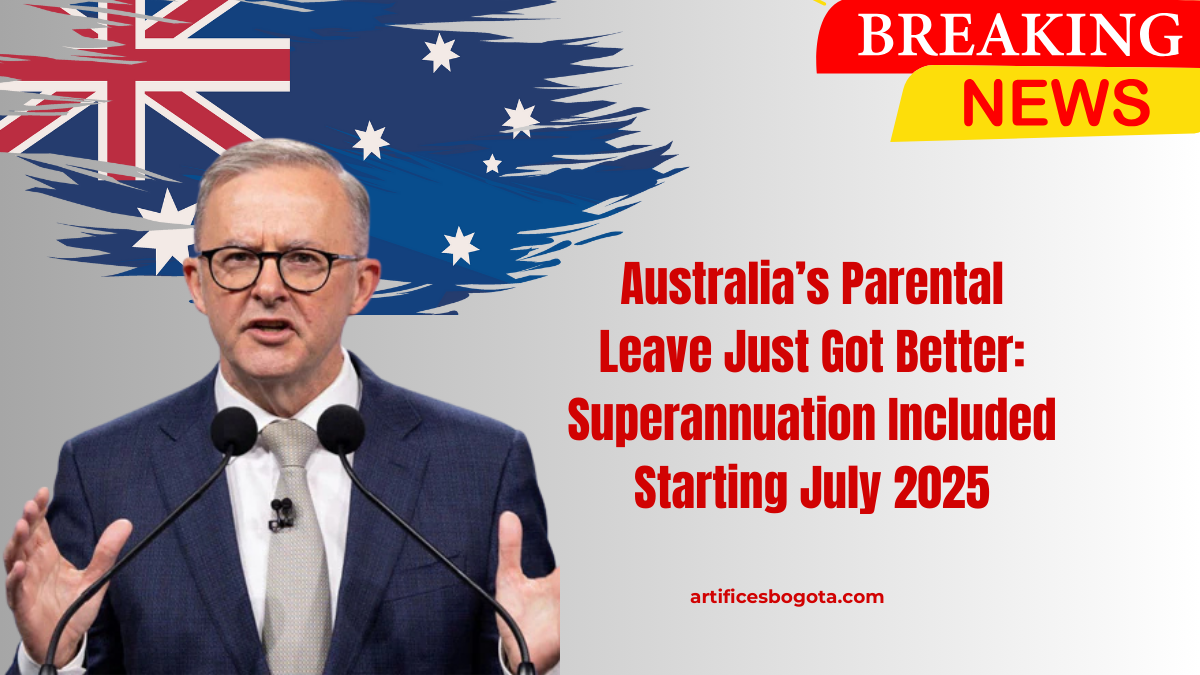Starting in July 2025, Australian parents receiving government-paid parental leave (PPL) will also benefit from superannuation contributions.
This landmark reform aims to provide greater financial security for families and address the long-standing gender disparity in retirement savings.
This article provides all the essential details about the new Australia parental leave pay, including eligibility, how it works, and the expected superannuation contributions that will make a significant impact on long-term financial security.
What’s Changing in Australia’s Parental Leave Pay?
As of July 1, 2025, Australia’s Paid Parental Leave (PPL) scheme will undergo a major transformation. Parents on PPL will now receive superannuation contributions on top of their paid leave payments.
This change is crucial for addressing the gender retirement income gap, as women are typically the primary caregivers and often end up with significantly lower superannuation savings compared to men.
Currently, the PPL system allows eligible parents to receive paid leave at the national minimum wage, but without any superannuation being added.
This reform aims to level the playing field, ensuring that time taken off to care for children doesn’t penalize parents’ future retirement savings.
How Does the New Parental Leave Pay System Work?
Under the new system, superannuation contributions will be paid on PPL for eligible parents starting July 2025. Here’s how the new process will work:
| Details | Description |
|---|---|
| Superannuation Rate | 12% of PPL payments, aligning with the national superannuation guarantee. |
| Payment Period | Initial PPL period: 22 weeks, increasing to 26 weeks by 2026. |
| Lump Sum Payments | Super contributions will be paid as a lump sum after each financial year, with interest applied. |
| Additional Contributions | Superannuation on PPL will not affect employer superannuation contributions, ensuring overall savings grow. |
Why Is This Change Important?
The introduction of superannuation on PPL is a critical move in addressing Australia’s gender retirement gap. Currently, women retire with about 25% less super than men, equating to an average shortfall of $51,700.
This change will help reduce that gap, ensuring parents, especially women, continue building their superannuation savings while they take time off work to care for their children.
This reform is part of a broader government effort to improve economic conditions for women, including expanding the PPL scheme to 26 weeks by 2026 and making childcare more affordable. The AUD 1.1 billion investment in superannuation on PPL demonstrates a long-term commitment to supporting families and promoting gender equality.
How Much Will You Receive in Superannuation Contributions?
For a parent receiving PPL for the maximum 26-week period, they could receive up to $3,000 in superannuation contributions. This is calculated as 12% of the PPL payment, which is based on the national minimum wage. Over time, these contributions could significantly increase, thanks to the compounding effects of the superannuation system.
| Superannuation Example | Amount |
|---|---|
| PPL for 26 weeks (National Minimum Wage) | Up to $3,000 in superannuation contributions |
By including super contributions on parental leave payments, this reform ensures that parents are not financially penalized for taking leave to raise their children, helping build a more equitable workforce.
Challenges and Criticisms
While this change has been largely welcomed, there are some calls for further improvements. Greens Senator Larissa Waters has advocated for extending PPL to 52 weeks, a suggestion that was also recommended by the Women’s Economic Equality Taskforce.
The AUD 1.1 billion cost to fund the superannuation payments has also sparked debate, with concerns about whether the government’s budget can sustain such significant investment in the long term.
The introduction of superannuation on parental leave pay is a significant step forward for gender equality and financial security in Australia.
Starting in July 2025, parents on government-paid parental leave will receive super contributions, helping to close the gender retirement gap and providing long-term financial stability for families.
This change, coupled with the gradual increase in the PPL period to 26 weeks by 2026, represents a major reform in supporting working parents and promoting economic equality.
FAQs
1. When will superannuation be paid on parental leave?
- Superannuation contributions will begin in July 2025. The payment will be 12% of your PPL payments and will be deposited into your nominated super fund.
2. How much superannuation will I receive while on PPL?
- If you receive the maximum PPL period of 26 weeks, you could receive up to $3,000 in superannuation contributions, depending on the national minimum wage.
3. Does this change affect employer superannuation contributions?
- No, the superannuation paid on PPL is in addition to any super contributions from your employer, so it will not affect your overall retirement savings.




